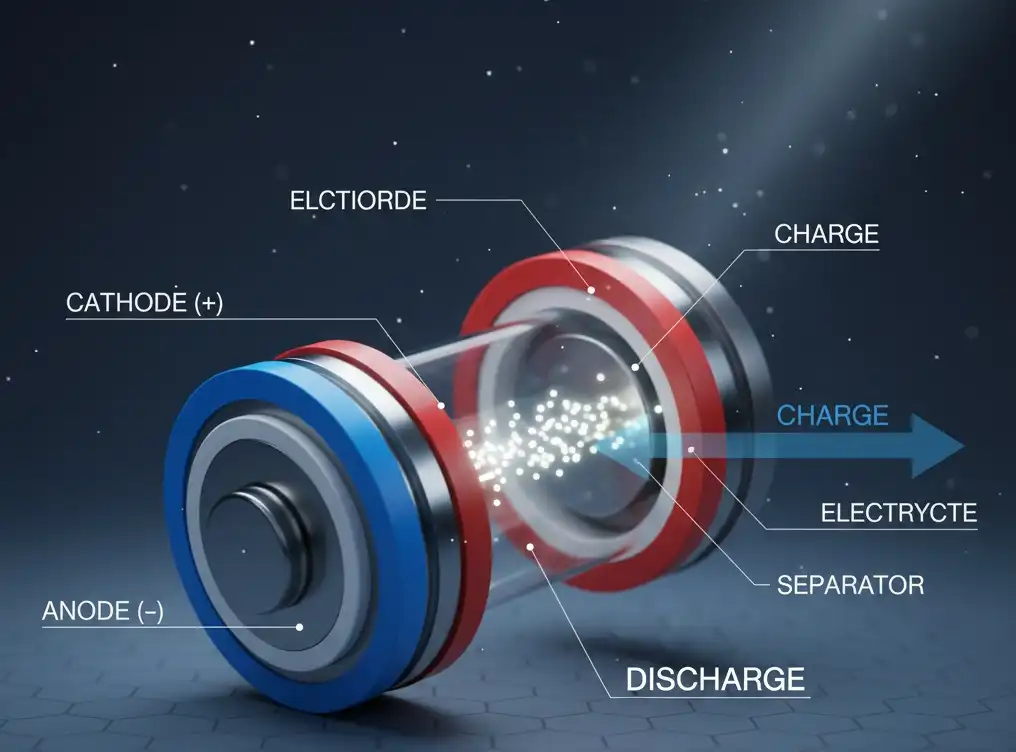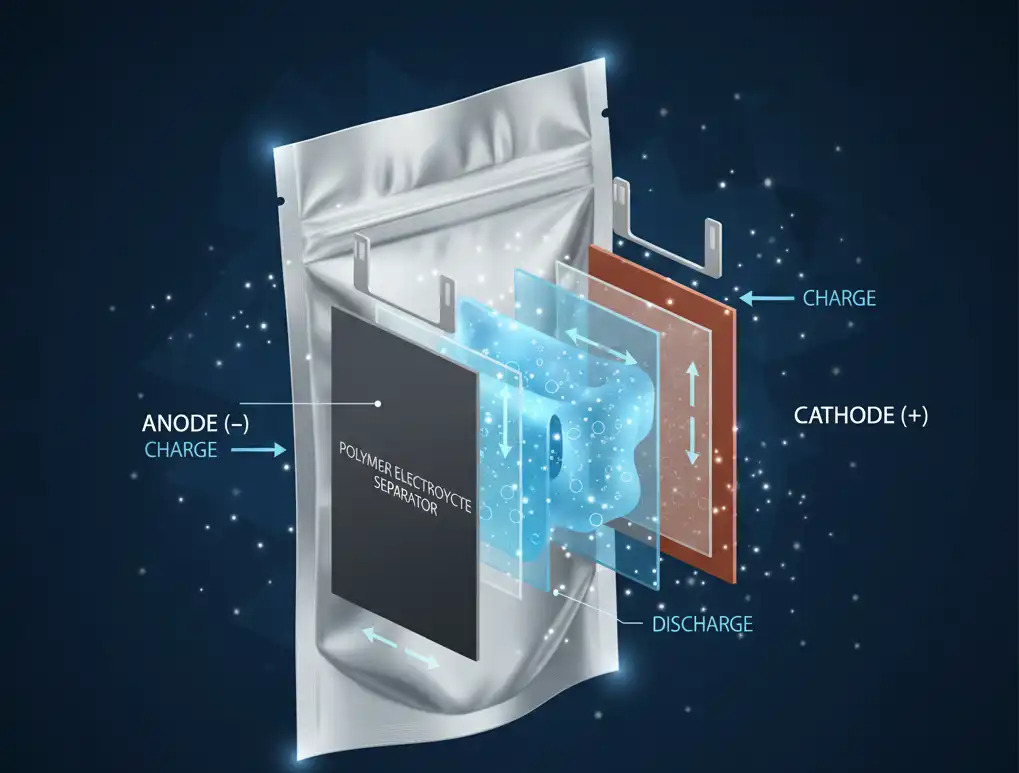Table of Contents
In the dynamic world of mobile technology, the battery is the unsung hero, powering our daily lives from dawn till dusk. As consumers, we often focus on screen size, camera quality, and processing power, but the type of battery dictating these features remains a mystery to many. The two dominant players in this arena are Lithium-Ion (Li-ion) and Lithium-Polymer (Li-Po) batteries. Understanding the differences between Lithium Ion vs Lithium Polymer Batteries is crucial for anyone looking to make an informed decision about their next mobile phone.
A Brief History: The Evolution of Mobile Phone Batteries
Before diving into the specifics of Lithium Ion vs Lithium Polymer Batteries, let’s take a quick look at how we got here. Early mobile phones relied on Nickel-Cadmium (NiCd) and Nickel-Metal Hydride (NiMH) batteries. While functional, these batteries suffered from issues like the “memory effect” and relatively low energy density. The introduction of lithium-based batteries revolutionized the industry, offering significantly higher energy density, lower self-discharge rates, and no memory effect, making them ideal for the increasingly demanding power needs of modern smartphones.
Lithium-Ion Batteries: The Established Workhorse
Lithium-ion batteries have been the workhorse of the mobile phone industry for decades. They are renowned for their high energy density, which means they can store a significant amount of power in a relatively small and light package. This makes them an excellent choice for devices where space and weight are at a premium.
How Lithium-Ion Batteries Work
A Li-ion battery operates through the movement of lithium ions between a positive electrode (cathode) and a negative electrode (anode) through an electrolyte. During discharge (when you use your phone), lithium ions move from the anode to the cathode, releasing energy. When charging, the process reverses, with ions moving from the cathode back to the anode, storing energy. The electrolyte is typically a liquid organic solvent, which allows for efficient ion transfer.

Advantages of Lithium-Ion Batteries
- High Energy Density: As mentioned, this is a major selling point, allowing for longer usage times in compact devices.
- Low Self-Discharge Rate: Li-ion batteries lose their charge very slowly when not in use, meaning your phone won’t be dead after sitting for a few days.
- No Memory Effect: Unlike older battery technologies, Li-ion batteries don’t need to be fully discharged before recharging. You can top them up whenever convenient without affecting their overall capacity.
- Cost-Effective: Due to their widespread adoption and mature manufacturing processes, Li-ion batteries are generally more affordable to produce than Li-Po batteries.
Disadvantages of Lithium-Ion Batteries
- Safety Concerns: The liquid electrolyte in Li-ion batteries is flammable. If punctured or overcharged, there’s a risk of thermal runaway, which can lead to swelling, fire, or even explosion. This is why strict safety circuits are implemented in all devices using Li-ion batteries.
- Fixed Shapes: Most Li-ion batteries come in rigid, cylindrical, or prismatic (rectangular) cell formats. This limits design flexibility for mobile phone manufacturers who are constantly striving for thinner and more uniquely shaped devices.
- Degradation Over Time: Like all batteries, Li-ion batteries degrade over time, losing capacity with each charge cycle. This is an unavoidable aspect of their chemistry.
Lithium-Polymer Batteries: The Flexible Contender
Lithium-polymer batteries emerged as a successor to Li-ion technology, aiming to address some of its limitations, particularly regarding safety and form factor. While they also use lithium ions for charge transfer, the key difference lies in the electrolyte.
How Lithium-Polymer Batteries Work
Instead of a liquid electrolyte, Li-Po batteries use a polymer electrolyte, which can be a gel-like or solid material. This polymer material acts as a separator and also conducts lithium ions. The electrodes are typically laminated onto this polymer, creating a flexible, pouch-like cell structure. This construction is often why you see them referred to as “pouch cells.”

Advantages of Lithium-Polymer Batteries
- Enhanced Safety: The polymer electrolyte is less prone to leakage and is less flammable than the liquid electrolyte in Li-ion batteries, significantly reducing the risk of fire or explosion, though still not entirely eliminating it.
- Flexible Form Factors: This is a major advantage for mobile phone designers. Li-Po batteries can be manufactured in almost any shape or size, allowing for incredibly thin devices and more efficient use of internal space. This flexibility is a key differentiator in the Lithium Ion vs Lithium Polymer Batteries debate for sleek phone designs.
- Thinner Designs: Their pouch cell construction allows for extremely thin profiles, contributing to the slim designs of modern smartphones.
- Lightweight: Generally, Li-Po batteries tend to be lighter than their Li-ion counterparts of similar capacity due to the absence of a rigid metal casing.
Disadvantages of Lithium-Polymer Batteries
- Lower Energy Density (Historically): Traditionally, Li-Po batteries had a slightly lower energy density compared to Li-ion. However, advancements in technology have significantly closed this gap, and for practical mobile phone applications, the difference is often negligible.
- Higher Manufacturing Cost: The more complex manufacturing process and the specialized polymer materials can make Li-Po batteries more expensive to produce.
- Shorter Lifespan (Potentially): Some studies suggest that Li-Po batteries might have a slightly shorter cycle life than Li-ion batteries under certain conditions, though this can vary greatly depending on the specific chemistry and usage patterns.
- Swelling: While safer than Li-ion, Li-Po batteries can still swell if overcharged or damaged, which can damage the device.
Lithium Ion vs Lithium Polymer Batteries: A Direct Comparison
To summarize the key differences and help you understand the nuances of Lithium Ion vs Lithium Polymer Batteries, here’s a comparison table:
| Feature | Lithium-Ion (Li-ion) | Yes, it can swell if damaged/overcharged |
| Electrolyte | Liquid organic solvent | Gel-like or solid polymer |
| Form Factor | Rigid (cylindrical, prismatic) | Flexible (pouch cell), can be any shape |
| Safety | Higher risk of thermal runaway if damaged/overcharged | Lower risk of thermal runaway, less flammable electrolyte |
| Energy Density | Generally higher | Historically slightly lower, now very comparable |
| Cost | More cost-effective to manufacture | More expensive to manufacture |
| Design Flexibility | Limited due to rigid cells | High, allows for thinner and custom-shaped devices |
| Weight | Slightly heavier for equivalent capacity | Generally lighter for equivalent capacity |
| Common Use in Phones | Widely used, especially in older or budget models | Increasingly common in premium and thin smartphones |
| Risk of Swelling | Yes, it can swell if damaged/overcharged | Yes, can swell if damaged/overcharged |
| Lifespan | Excellent cycle life | Good cycle life, potentially slightly less than Li-ion |
Which Battery Type is in Your Mobile Phone?
In recent years, the lines between Lithium Ion vs Lithium Polymer Batteries have blurred considerably. Many modern smartphones, especially those with ultra-thin designs and innovative form factors, utilize Li-Po batteries due to their flexibility and enhanced safety. However, advancements in Li-ion technology, such as the introduction of solid-state electrolytes in research, are constantly pushing its boundaries.
Most manufacturers don’t explicitly state whether a phone uses Li-ion or Li-Po. Instead, they often simply refer to them as “Li-ion” because, fundamentally, both are based on lithium-ion chemistry. The “polymer” in Li-Po primarily refers to the electrolyte material and the resulting construction. So, if your phone’s specifications simply say “Li-ion battery,” it could technically be either, though it often implies a more traditional Li-ion cell. For very thin and flexible devices, it’s highly likely to be a Li-Po variant.
Battery Care: Maximizing Your Phone’s Lifespan
Regardless of whether your phone uses Lithium Ion vs Lithium Polymer Batteries, proper battery care can significantly extend its lifespan and maintain optimal performance.
- Avoid Extreme Temperatures: Both types of batteries perform best at room temperature. Extreme heat can accelerate degradation, while extreme cold can temporarily reduce capacity.
- Don’t Deep Discharge Regularly: While modern lithium batteries don’t suffer from the memory effect, constantly letting your phone die completely can put stress on the battery. It’s generally better to keep the charge between 20% and 80%.
- Avoid Overcharging: Modern smartphones have intelligent charging circuits that prevent true overcharging. However, leaving your phone plugged in for extended periods after it reaches 100% can still generate heat, which is detrimental to battery health.
- Use Original Chargers: Always use the charger provided with your phone or a reputable third-party charger that meets the manufacturer’s specifications. Cheap, uncertified chargers can damage your battery.
- Software Updates: Keep your phone’s software updated. Manufacturers often release updates that optimize power management and improve battery efficiency.
The Future of Mobile Phone Batteries
The debate of Lithium Ion vs Lithium Polymer Batteries continues to evolve with ongoing research and development. Solid-state batteries, which replace the liquid or gel electrolyte with a solid one, are considered the next big leap. These promise even higher energy density, greater safety, and faster charging speeds. While still largely in the research and development phase for mass-market mobile phones, solid-state technology holds immense potential to once again redefine battery performance. Furthermore, advancements in anode and cathode materials, along with improved battery management systems, are constantly pushing the boundaries of what both Li-ion and Li-Po batteries can achieve.
Conclusion
In the perennial comparison of Lithium Ion vs Lithium Polymer Batteries for mobile phones, there isn’t a single definitive winner. Both technologies offer distinct advantages and disadvantages. Lithium-ion batteries remain a reliable, cost-effective choice with excellent energy density. Lithium-polymer batteries, with their flexibility and enhanced safety, have become the preferred option for premium, ultra-thin, and innovatively designed smartphones.
Ultimately, the choice of battery technology often comes down to a manufacturer’s design priorities, cost considerations, and performance goals. As a consumer, understanding the core differences between Lithium Ion vs Lithium Polymer Batteries can help you appreciate the engineering that goes into your device and empower you to take better care of its most vital component: the battery. With proper care, both types of batteries can provide years of reliable service, keeping your mobile world connected and powered.
Also Read:

